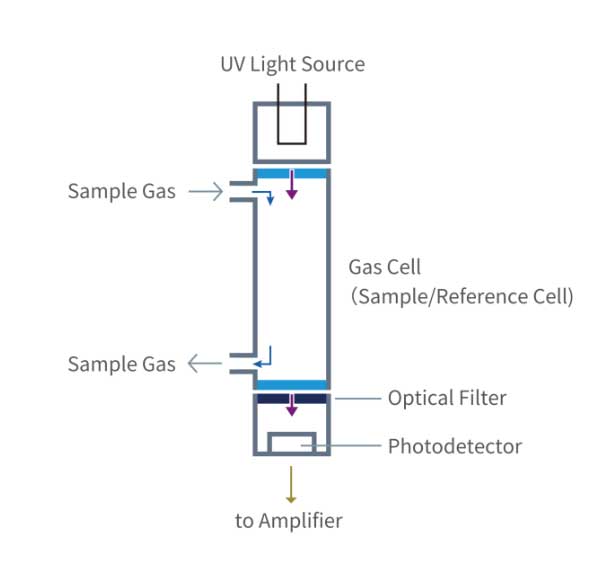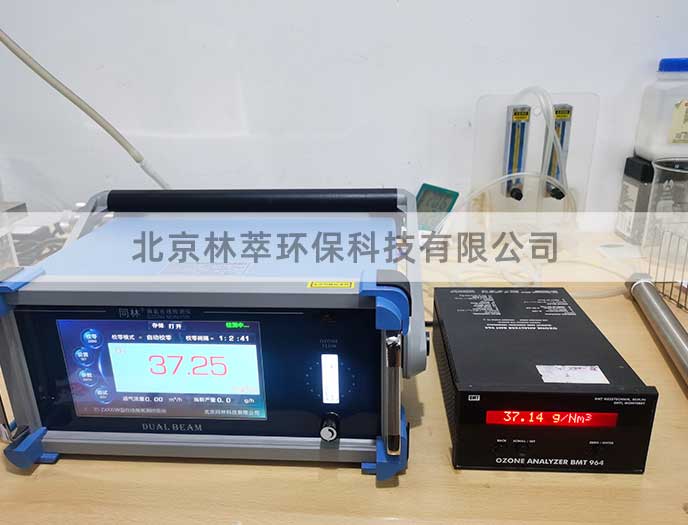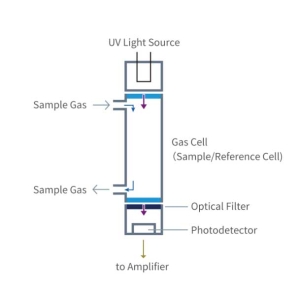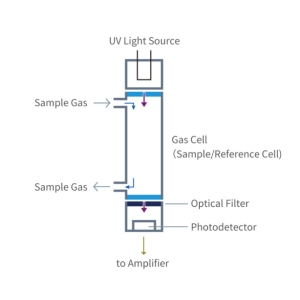Detailed explanation of the working principle of ozone gas analyzer
Ozone gas analyzer is a precision instrument for detecting and measuring ozone (O) concentration in the environment, which is widely used in industry, environmental monitoring, water treatment, food processing and other fields. Understanding its working principle helps to better select, use and maintain the equipment. This paper will analyze the working principle of ozone gas analyzer in detail.

1. The core principle of ozone gas analyzer
The ozone gas analyzer is mainly based on the ultraviolet absorption method. The core principle is to use the absorption properties of ozone molecules to specific wavelengths of ultraviolet light. Ozone has a strong absorption peak at a wavelength of 254 nanometers (nm), and the concentration of ozone can be calculated by measuring the change in light intensity before and after ultraviolet light passes through a gas sample.
2. The specific process of ultraviolet absorption method
- Light source emission: The instrument's built-in ultraviolet lamp emits ultraviolet light with a wavelength of 254 nm.
- Optical path transmission: ultraviolet light is transmitted through the gas chamber (containing the gas sample to be measured).
- Light intensity detection: After the ultraviolet light passes through the gas chamber, the photoelectric sensor detects the remaining light intensity.
- Concentration calculation: According to the Lambert-Beer Law, the concentration of ozone is calculated by comparing the intensity of the incident light and the intensity of the transmitted light.
3. Application of Lambert-Beer law
The Lambert-Beer law is the basis of the ultraviolet absorption method, and its formula is:
A = ? ? ? l c
Among them:
- (A) is absorbance;
- (?) is the molar absorption coefficient of ozone;
- (c) Ozone concentration;
- (l) is the optical path length (air chamber length).
Ozone concentration (c) can be calculated by measuring absorbance (A), combined with the known (?) and (l).
4. Key components of ozone gas analyzer
- UV light source: provides stable 254 nm UV light.
- Gas chamber: used to hold the gas sample to be measured, the length of the optical path affects the measurement accuracy.
- Photoelectric sensor: detects the transmitted light intensity and converts it into an electrical signal.
- Signal processing unit: The electrical signal is processed, the ozone concentration is calculated and the result is displayed.
5. Advantages of ozone gas analyzer
- High accuracy: UV absorption method has extremely high measurement accuracy and sensitivity.
- Real-time monitoring: continuous on-line monitoring of ozone concentration.
- Strong anti-interference ability: not affected by other gas components, reliable measurement results.
- High stability: The instrument is stable and suitable for long-term monitoring.
6. Application Scenarios
- Industrial ozone generator: Monitor the output concentration of the ozone generator.
- Water treatment: Test the amount of ozone added in the water treatment process.
- Environmental monitoring: Monitoring ozone concentrations in the atmosphere and assessing air quality.
- Food processing: for the control of ozone concentration during food disinfection.
7. Use precautions
- Periodic calibration: To ensure the accuracy of measurement results.
- Maintenance of light source and air chamber: avoid contamination or damage affecting measurement accuracy.
- Avoid high temperature and humidity environments: extreme environments may affect instrument performance.

Conclusion
Ozone gas analyzer is based on the working principle of ultraviolet absorption method. It has the characteristics of high precision, real-time monitoring and strong anti-interference ability, and is an important tool for ozone concentration detection. By understanding its working principle, users can better choose and use the equipment to ensure the accuracy and reliability of the measurement results. If you need more information about ozone gas analyzers, please contact us!
 臭氧檢測儀測量結(jié)果不準(zhǔn)確可能原因
臭氧檢測儀測量結(jié)果不準(zhǔn)確可能原因
 Detailed explanation of the wo
Detailed explanation of the wo
 臭氧檢測儀國家標(biāo)準(zhǔn)有哪些
臭氧檢測儀國家標(biāo)準(zhǔn)有哪些
 紫外吸收氣體分析儀的結(jié)構(gòu)與工作原理
紫外吸收氣體分析儀的結(jié)構(gòu)與工作原理